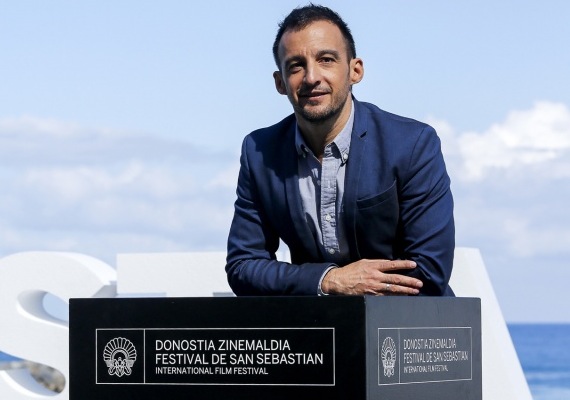Alejandro Amenábar • Director
"I’m more naturally inclined to make thrillers"
- SAN SEBASTIÁN 2015: Alejandro Amenábar has opened the San Sebastian Festival with Regression, an intense psychological thriller inspired by the narrative style of 1970s American cinema

Alejandro Amenábar has opened the 63rd San Sebastian Film Festival with Regression [+see also:
film review
trailer
making of
interview: Alejandro Amenábar
film profile], an intense psychological thriller inspired by the narrative style of 1970s American cinema. Cineuropa met up with him:
Cineuropa: A lot of people are saying that Regression heralds your return to the thriller genre, but you never really left…
Alejandro Amenabar: Yes, a lot of people are saying that. There are directors who are more drawn to making comedies and me, I’m more naturally inclined towards thrillers and mysteries as both a viewer and a director. It’s always made sense to me. This film certainly marks a return to the style of my first films, Thesis and The Others. I wanted to make a diehard horror film. I always make films that I myself would like to see at the cinema – as I’m also a viewer – and I like horror, but alas, it’s not always easy to find good specimens belonging to the genre. So that’s how, as usual, I found myself drifting in this direction, making my own little blend of genres, and the result is a sort of psychological film with elements of drama.
You shot Agora [+see also:
trailer
film profile] in Malta. For Regression, you went to Canada.
It’s easier to film in Canada than in Madrid, because over there, they view cinema differently, with a certain level of respect... Here, there’s no real policy in place for welcoming foreign productions that filmmakers want to shoot here, when Spain could be an incredible filming location. The fact that Pompeya is being filmed in Toronto and not in Spain says a lot about the situation in our country. Toronto is one giant set: half of Hollywood goes there to film. It was the best place for my film, what with the tax rebates they offer, the support available once you’re there and the respect they have for what is well and truly a profession. I missed Spanish technicians, with their energy, great professionalism, and the feeling you get when you work with them that you’re with family, but as they’re very good, we could only bring a few of them with us. The other members of the team had to be Canadians.
How many?
Basically, we had to shoot with a Canadian team. We only brought costume designer Sonia Grande, Daniel Aranyo, our director of photography, our assistant cameraman and our production manager. Post-production took place entirely in Spain.
You brought together an international troupe of actors that includes Europeans.
Almost all the actors are Canadian except for Ethan Hawke and the grandmother of the family, Dale Dickey, who are American. We also have two British actors (Emma Watson and David Thewlis) and a Swede (David Dencik). We chose them because we needed Europeans who can speak English with an American accent perfectly.
This is the third time you’ve filmed in English (following on from The Others and Agora).
It’s harder than filming in Spanish, in your mother tongue. There are technical expressions that I still haven’t completely got the hang of, but when I need to, I can tell the director of photography what I want and he translates it for the rest of the team. With the actors, though, it’s a bit trickier: there are specific things that I can explain in Castilian, but not in English. That said, although it’s a bit harder, it gets done.
You said you were inspired to make this film by the work of Sidney Lumet and other North-American filmmakers of that era. Theirs is a calm type of cinema, in which the audience is fed information little by little, whilst today’s audiences are used to a different, more fast-paced rhythm. Was it not a bit of a risk to go down this path?
Yes, I was aware of the risk. It’s a telegraphic film: as I didn’t want it to be dense, we avoided doing anything too complicated with the editing, the sound and the special digital effects, but I wanted the plot to take us from A to B to C, I wanted the story to be hectic. As a result, I don’t think the viewers will get bored and I think they’ll be able to follow the plot easily – as there aren’t multiple plots, just one main one. Moreover, this is one of my films that contains the most music, because we couldn’t have done what Coppola did in the 1970s with The Conversation, a film which I love but which today’s audiences would not watch. I think that sometimes, a small change in rhythm is no bad thing, and allows the viewer to get into the film better. What would be truly awful for me is if people were to get bored watching Regression.
(Translated from Spanish)
Did you enjoy reading this article? Please subscribe to our newsletter to receive more stories like this directly in your inbox.
















